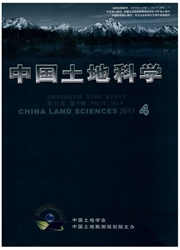

 中文摘要:
中文摘要:
研究目的:以国土空间分区为研究对象,对中国国土空间分区的内涵、方法和基本问题进行了探讨,为中国省和区域国土空间规划的编制提供指导和参考。研究方法:文献分析,资料总结与归纳。研究结果:(1)提出以县级行政区为主体,乡镇组团、保护区等为辅助的国土空间分区评价单元划分方式;(2)从生产、生活和生态三方面对国土空间进行多功能表达并阐述分区指标体系构建的方法;(3)制定了自上而下与自下而上相结合的省和区域国土空间分区技术路线。研究结论:解决了如何划分评价单元、构建分区指标体系和分区技术路线等国土空间分区的基本问题,研究成果可为省和区域国土空间规划编制提供科学依据,并对区域均衡与可持续发展具有指导意义。
 英文摘要:
英文摘要:
The purpose of this paper is to analyze the connotation, methods and the basic issues of spatial zoning in order to provide guidance and reference for the provincial and regional spatial planning. Methods employed include comparative analysis and deduction. The results indicate that 1) it put forward a classification system of evaluation units, which nominates the county level as the main body, and the township level and protection zones are auxiliary; 2) a method was developed multi-functionally expressing the territorial space and building indicator system in terms of three aspects, i.e., production, life and ecology; 3) a technological roadmap of spatial zoning combined top-down and bottom- up patterns was also developed. The paper concludes that the basic issues of classifying the evaluation units, indicator system construction and technology roadmap of spatial zoning are resolved. The research results can serve for provincial and regional spatial planning and promote regional balanced and sustainable development.
 同期刊论文项目
同期刊论文项目
 同项目期刊论文
同项目期刊论文
 期刊信息
期刊信息
